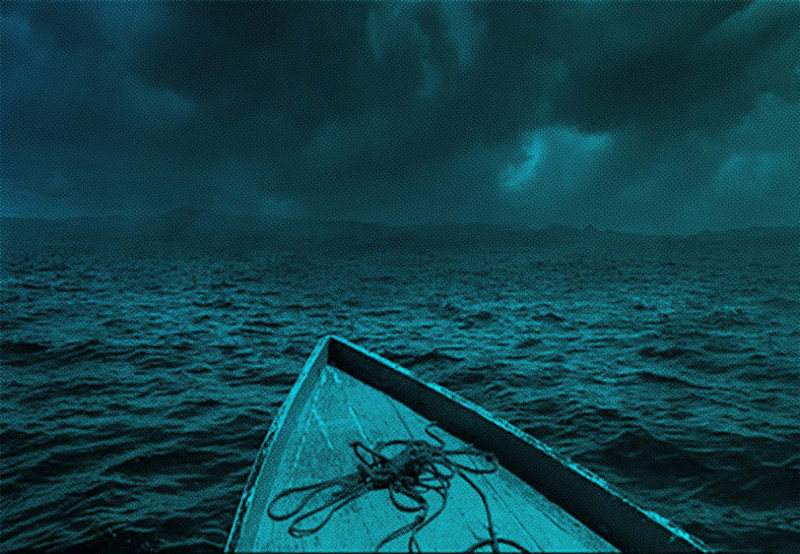Piers Secunda was born in London in 1976 and studied painting at Chelsea College of Art. Since the late nineties Piers has developed a studio practice using paint in a sculptural manner, rejecting the limitations traditionally imposed by the canvas. Piers’ studio practice is heavily research-based and has focused for fifteen years on the destruction of culture, through relief paintings, drawings and prints.
Since 2019 Secunda has been researching the British Channel Island of Alderney, which was the location of the only German Concentration camp on British soil,during WWII. The islands inhabitants were evacuated by the British Navy due to its strategic importance, ten days before the first German forces arrived. Alderney is three miles long and located eight miles due west of the port of Cherbourg, on the French mainland. The island was occupied by Germany from 2nd of July 1940 until 16th of May 1945.
Thousands of forced and slave labourers were brought to the island under the Nazi regime, to build over one hundred and fifty concrete bunkers and gun emplacements. They turned Alderney into what Hitler demanded would be an “Impregnable Fortress” and a key defensive position in the “Atlantic Wall” fortifications. The prisoners were from Russia, Poland, Belarus, Ukraine, North Africa, France, Spain, Germany and the Netherlands. The labourers were fed starvation rations and worked to death in large numbers, some in their early teens only survived a few months. There is no accurate figure of the number that perished. They were housed in four main labour camps across the island: Helgoland, Norderney, Borkum and Sylt. In 1943, with the arrival of a contingent of SS to the Island, Sylt became a concentration camp.
With the help of researchers in the United States, Russia, France, Germany, The Netherlands, the U.K. and Spain, the exhibition Alderney: The Holocaust on British Soil presents works of art which are informed by new information and little known sites on the Island. These include an inscription in wet cement made by a slave labourer, a photograph of a 23 year old Russian pilot who died on Alderney and a forensic analysis of an execution wall. Many of the stories come to life through prints produced with an ink made from burned cordite, removed from German artillery, abandoned on Alderney after the war. Each group of prints contains a QR code printed within the artwork, enabling visitors to hear the story of each work, in Piers’ own words.
Each work in the exhibition contains new insights into the occupation of Alderney. Piers has uncovered the existence of a previously unknown Russian Gulag “Filtration Camp” in the process of his research, which was confirmed by the Gulag Museum in Moscow. An infographic reveal a wealth of information about activities on Alderney between D-Day and the return of the Island to British control, in May 1945. The data is presented here for the first time in an info-graphic.
In June 2022, two of the United States most respected forensic scientists visited Alderney at Piers’ request, to provide an analysis of what appeared to be a bullet damaged wall. The findings of their forensic and ballistics examinations have determined decisively that the wall is a firing squad execution site.
Perhaps most importantly, Piers’ reconnects the names of forced and slave labourers who were deported to Alderney, with their untold stories, creating an emotional bridge to long lost and otherwise anonymous victims. In this way, the research and findings demonstrate how much information about the U.K.’s experience of the Holocaust is still waiting to be found, understood and discussed.
Acknowledgements:
A remarkable number of people have generously helped in the research which has led to this exhibition. Their support has revealed far more data than can be presented in these rooms.
I would like to thank everyone listed here along with the archives and companies I have worked with. None of those named had to help, but all offered to and with an impressive generosity of spirit:
Mark Harding, Haydn Bateman, Sharon Donaldson and the Board of Blanchards Building Supplies (Leaseholders of Fort Platte Saline) Alex Snowden, Graham McKinley, Dirk Burgdorf, Maria Lotsmanova, Bruce Menning, Serge Klarsfeld, Eva Roell, Guus Meershoek, David Capps-Tunwell, SureScreen Scientifics, Andy Penny, Alexei Baikov, Roman Fisrov, Nicholas Marquez-Grant, Almudena García-Rubio, Óscar Rodríguez, William Manfredi, Nicholas Petraco, Peter Diaczuk, The staff of John Jay College of Criminal Justice in New York City, Emily Fielding, Arolsen Archive, Marcus Roberts, Weiner Library, German Federal Archives Berlin, International Tracing Service, Bad Arolsen, NARA, The U.S. National Archives, State Archive of the Russian Federation and The Gulag Museum, Moscow.
All information presented in this exhibition is sourced from documents held in archives, photographs and supporting documentation in private collections, or procured on my behalf by forensic specialists. This is a fact-based exhibition.
Piers Secunda 2023


